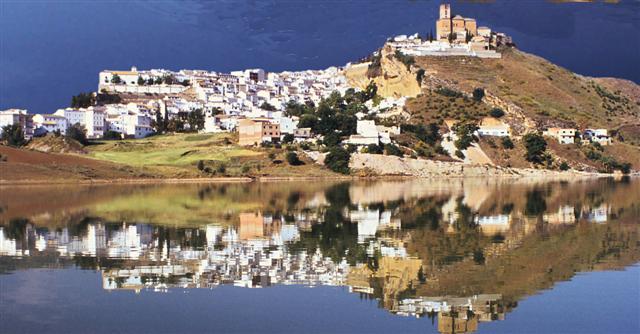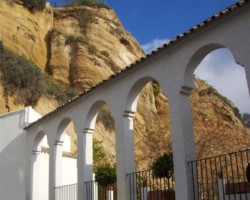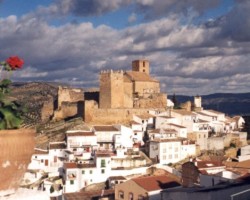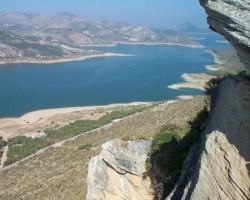Whilst the reservoir known as the lake of Andalusia submerged a picturesque riverside landscape of poplar groves and orchards. Whilst the reservoir known as the Lago de Andalucía [lake of Andalusia] submerged a picturesque riverside landscape of poplar groves, orchards and pathways, it compensated the village for this loss with the mirror formed by its waters, wherein Iznajar, appearing as a white ship that has run aground, proudly contemplates its reflection. The main mast is formed by the unfinished tower of the parish church and the bridge is represented by the castle, set amidst a series of crooked white-washed streets that demand perusal at a leisurely pace.
- The village is located in the south of Córdoba, along the C-334 road.
- Distance from Córdoba: 110 km.
- Altitude: 533 m.
- Surface area: 137.6 km2.
- Population: 4.865.
- Term used to designate inhabitants: Iznajeños.
- Region: Subbética Cordobesa.
The first references to Ins Ashar (the Arabic term means castle of Ashar and represents the origin of the present name of the village) appear in 886, when it formed part of the mullwallad rebellion led by Umar ibn Hafsun, although the original urban centre may have arisen in the 8th century. Following the fall of the Caliphate, the area formed part of the Zirid kingdom of Granada and was occupied by Berbers. The village's border position led it to change hands various times, before being definitively conquered by Christian forces in 1431, during the reign of John II. Pedro Fernández de Córdoba, Lord of Baena and Count of Cabra, was appointed keeper of the castle, and later was awarded the village as estate, along with the title of viscount of Iznájar, in return for support given to Henry IV in the battle against Prince Alfonso.














